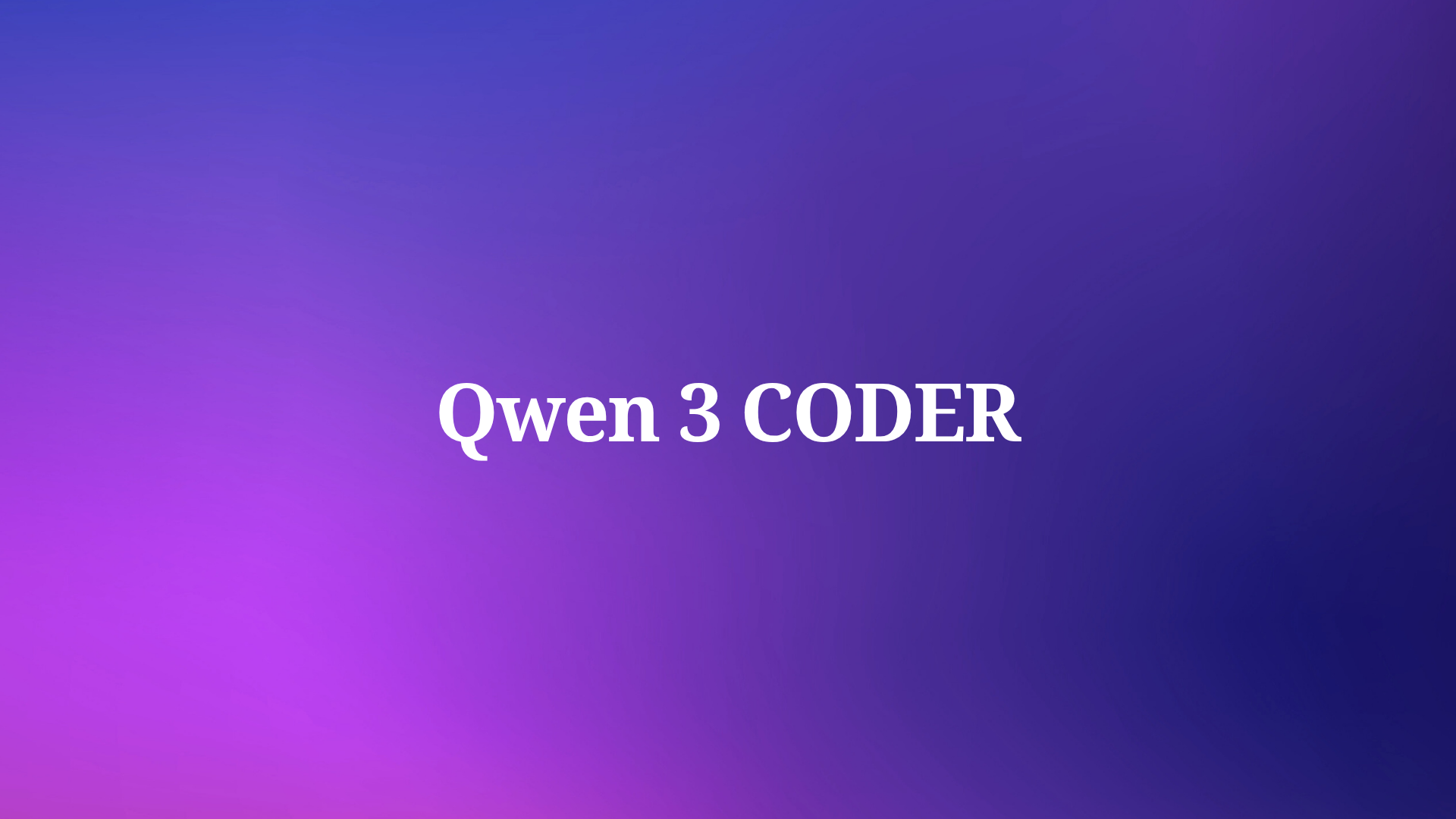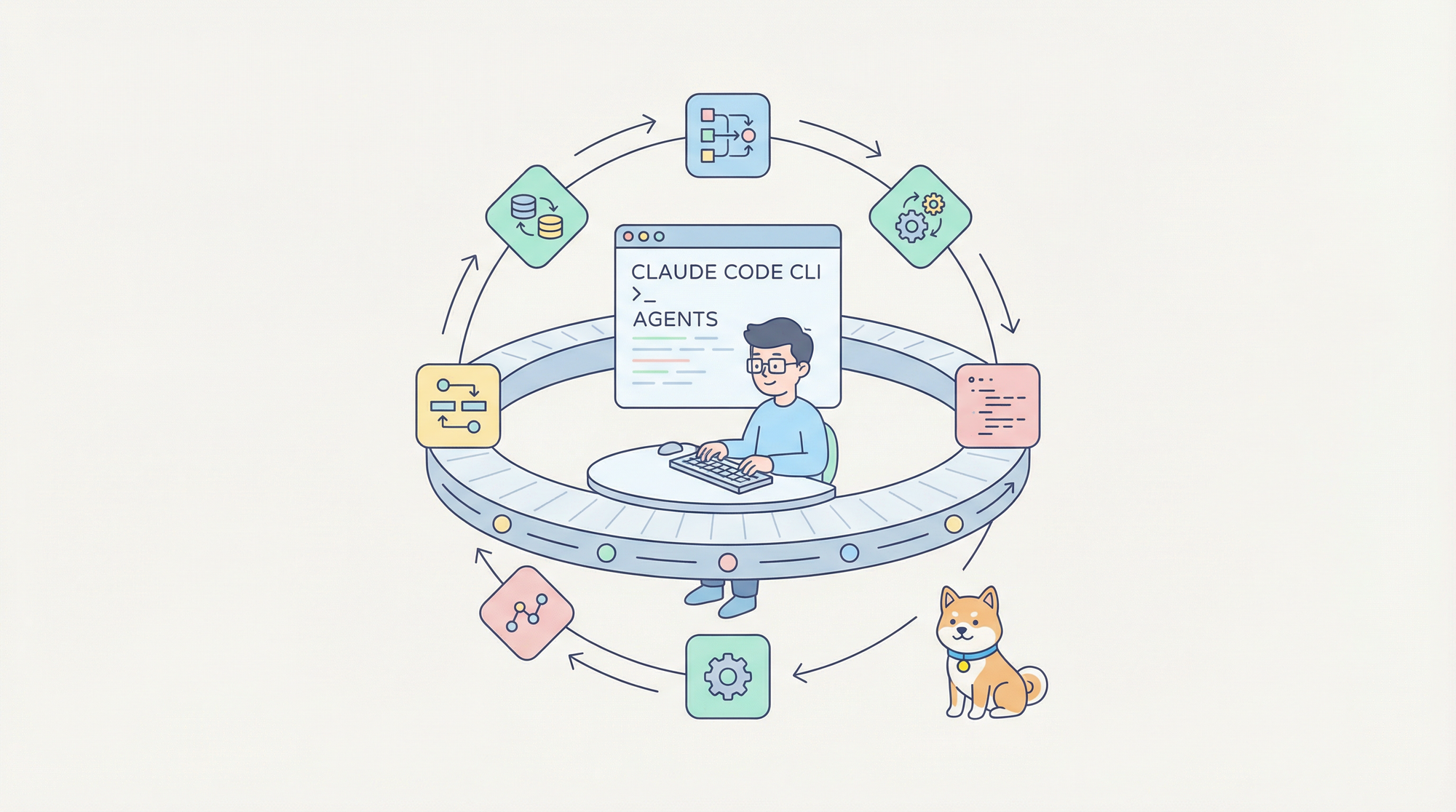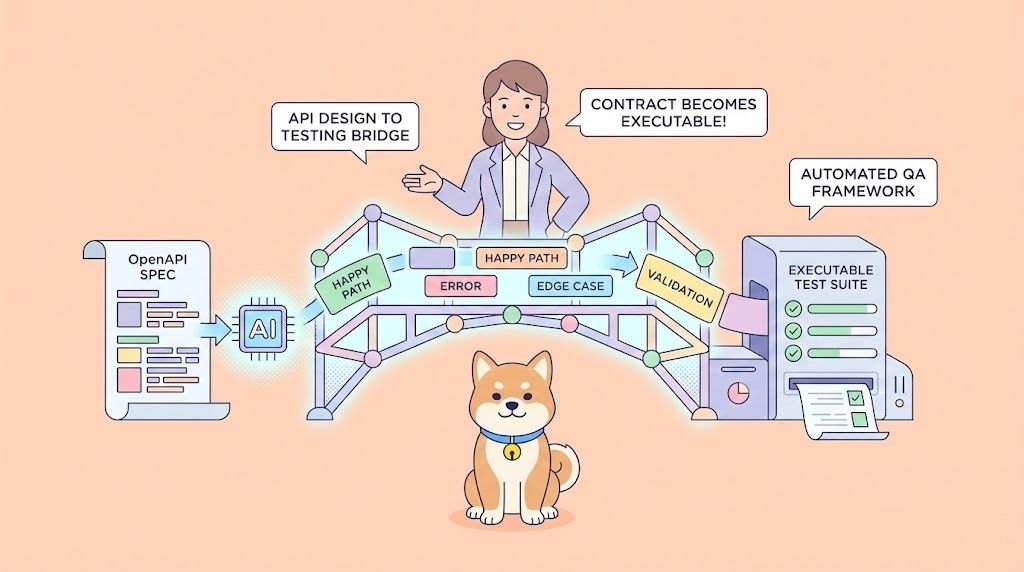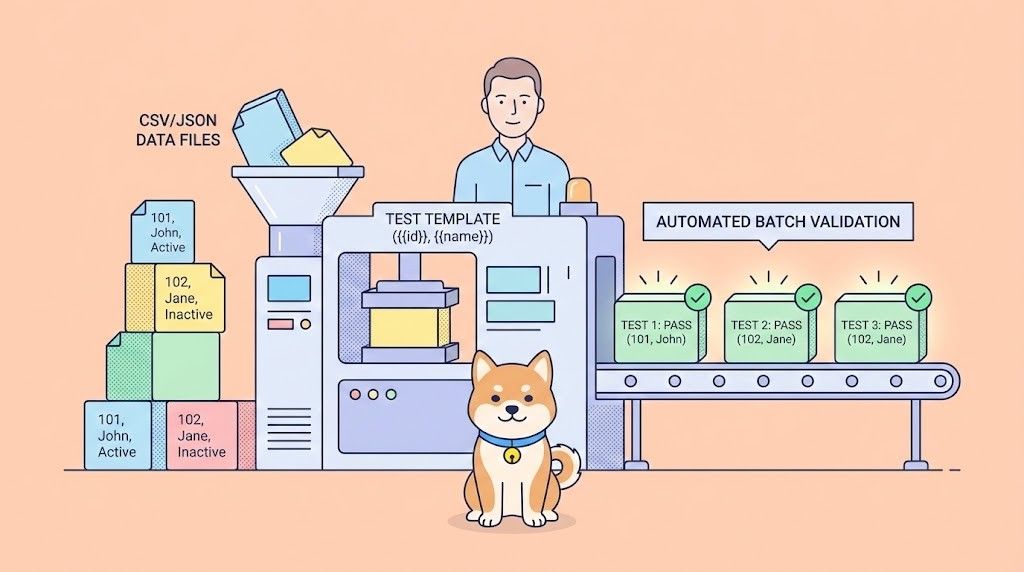Alibaba's Qwen team just dropped Qwen3-Coder, and developers are already calling it a game-changer. This 480B-parameter coding model is crushing benchmarks left and right, achieving state-of-the-art performance on SWE-Bench Verified and leading the pack on CodeForces ELO ratings.
What makes this release special? Qwen3-Coder handles everything from complex algorithm implementations to automated testing scenarios with precision that rivals senior developers.
Understanding Qwen3-Coder Architecture and Specifications
Qwen3-Coder is available in multiple variants, with the flagship Qwen3-Coder-480B-A35B-Instruct — a 480B-parameter Mixture-of-Experts model with 35B active parameters which supports the context length of 256K tokens natively and 1M tokens with extrapolation methods. This architectural approach represents a sophisticated engineering achievement that balances computational efficiency with performance capabilities.
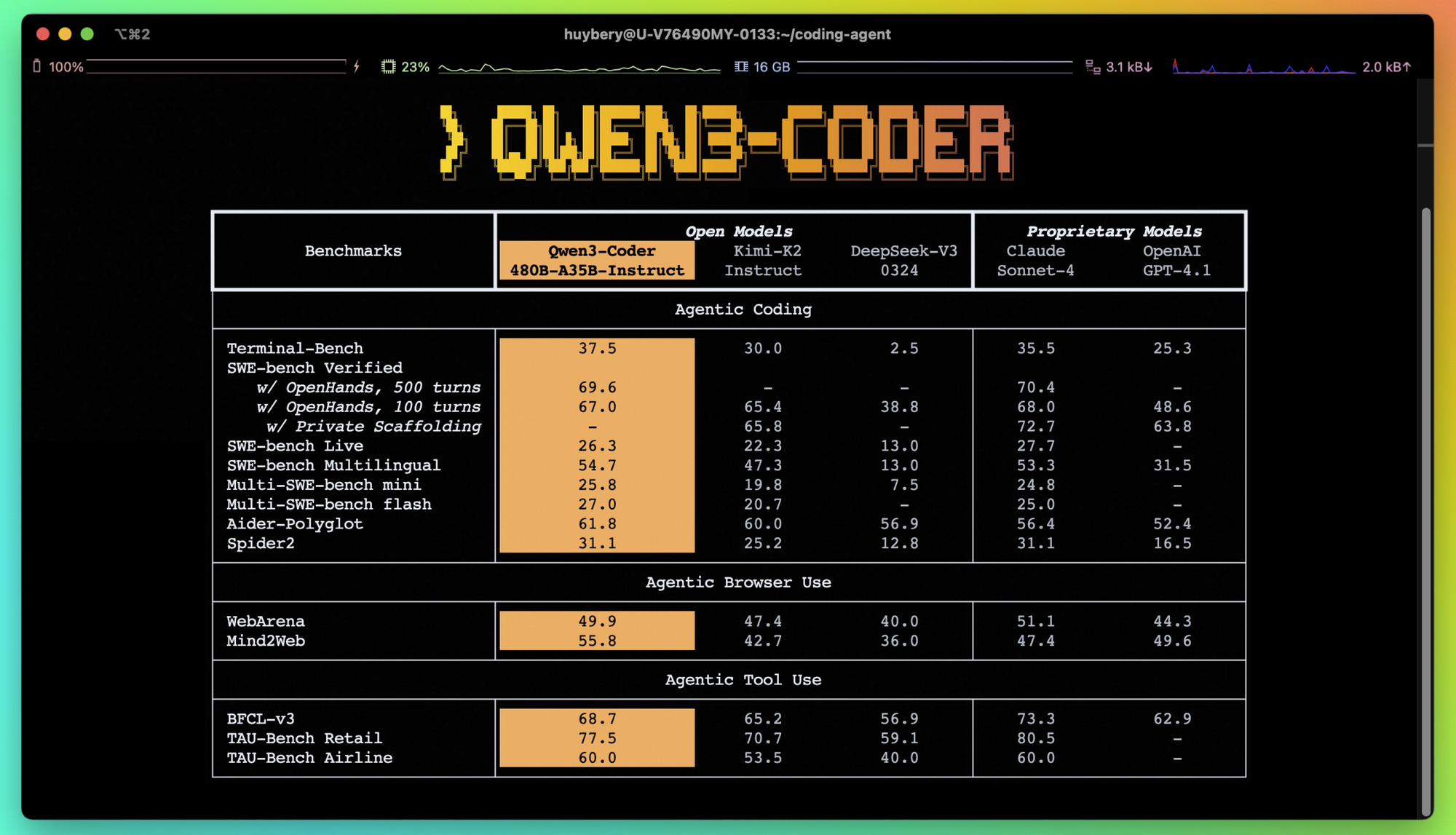
The Mixture-of-Experts (MoE) architecture enables Qwen3-Coder to activate only specific neural network segments during inference. This design pattern reduces computational overhead while maintaining exceptional performance across diverse programming languages and frameworks. Furthermore, the extended context window allows developers to work with larger codebases and more complex programming scenarios.
The model supports multiple programming languages including Python, JavaScript, Java, C++, Go, Rust, and many others. Additionally, it demonstrates proficiency in various coding paradigms such as object-oriented programming, functional programming, and procedural programming. This versatility makes Qwen3-Coder suitable for diverse development environments and project requirements.
Performance Benchmarks and Technical Achievements
Qwen3-Coder achieves state-of-the-art performance among open-source models on SWE-Bench Verified without test-time scaling. This benchmark represents one of the most challenging evaluations for coding models, testing their ability to solve real-world software engineering problems.
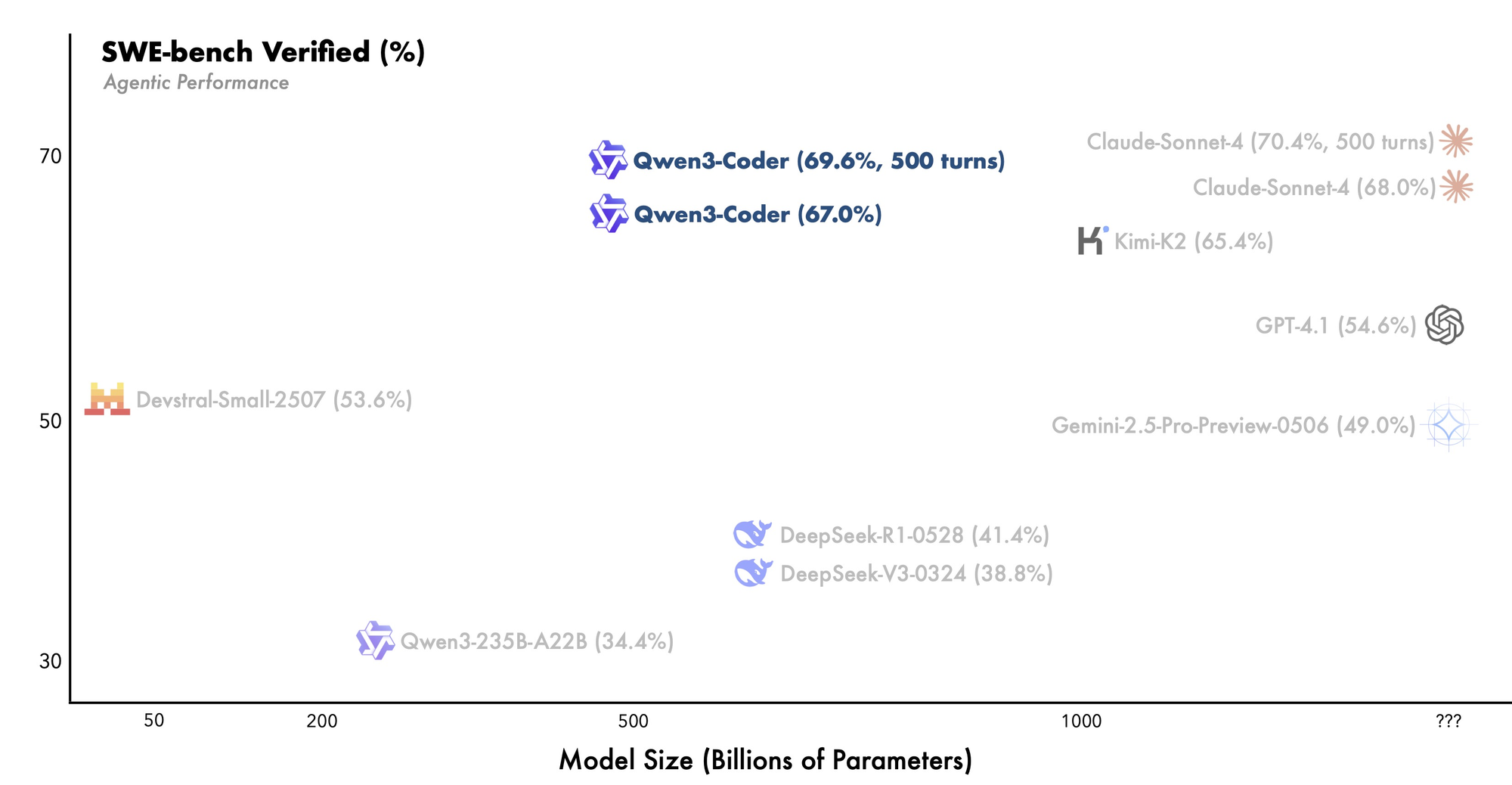
The model excels across multiple evaluation metrics. Qwen3-235B leads on the CodeForces ELO Rating, BFCL, and LiveCodeBench v5 benchmarks, demonstrating superior performance in competitive programming scenarios and practical coding tasks. These results indicate that Qwen3-Coder performs exceptionally well in both theoretical algorithmic challenges and real-world application development.
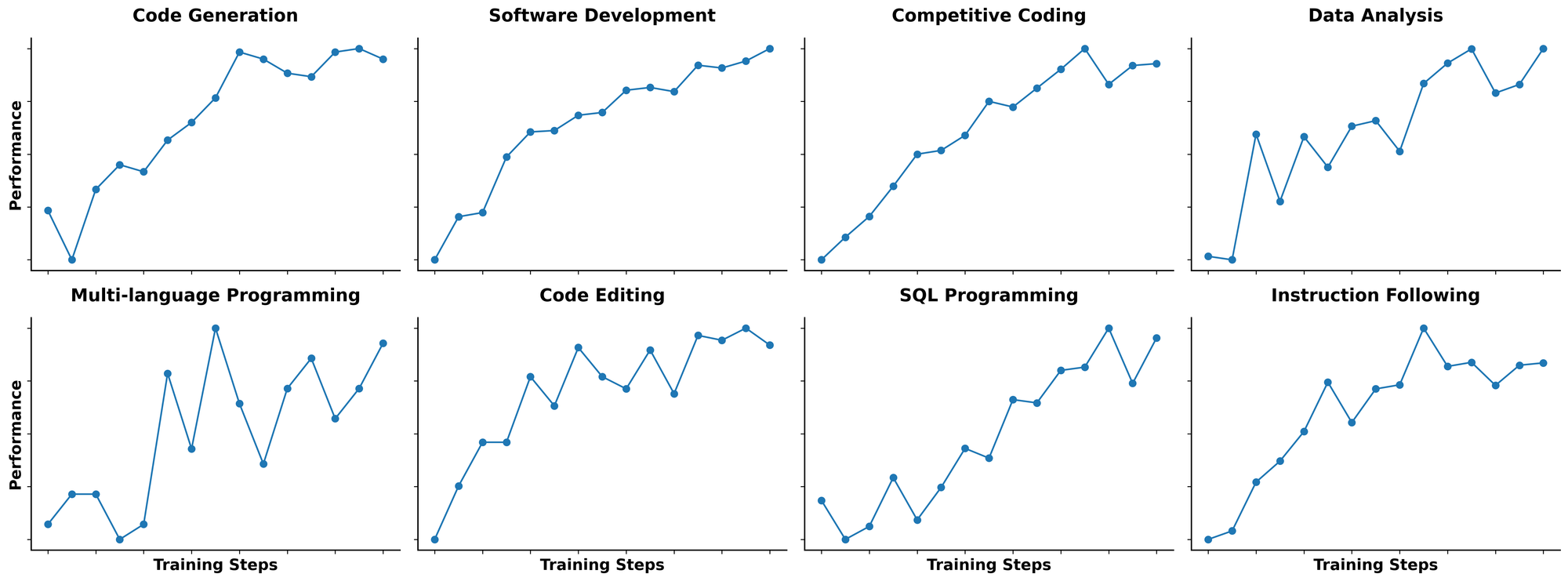
Moreover, the model demonstrates remarkable consistency across different programming domains. Whether handling data structure implementations, algorithm optimization, web development frameworks, or system-level programming, Qwen3-Coder maintains high accuracy and generates syntactically correct, functionally sound code.
Advanced Coding Capabilities and Use Cases
Qwen3-Coder transforms traditional development workflows through its comprehensive understanding of software engineering principles. The model generates complete functions, entire classes, and even full applications based on natural language descriptions. This capability accelerates development cycles and reduces time-to-market for software projects.
The model excels at code refactoring tasks, automatically identifying inefficient patterns and suggesting optimized alternatives. It analyzes existing codebases and provides recommendations for improving performance, readability, and maintainability. This feature proves invaluable for legacy system modernization and technical debt reduction.
Additionally, Qwen3-Coder demonstrates exceptional debugging capabilities. It identifies logical errors, syntax issues, and potential runtime exceptions within existing code. The model provides detailed explanations for identified problems and suggests appropriate solutions, effectively serving as an intelligent code review assistant.
Integration with Development Tools and Workflows
Modern development environments require seamless integration with existing tools and workflows. Qwen3-Coder adapts to various integrated development environments (IDEs) and text editors through API integrations and plugins. This compatibility ensures developers can leverage the model's capabilities without disrupting established productivity patterns.
The model integrates effectively with version control systems like Git, understanding branch structures, commit histories, and merge conflicts. This understanding enables Qwen3-Coder to provide context-aware suggestions that align with project evolution and team collaboration patterns.
Furthermore, Qwen3-Coder supports continuous integration and continuous deployment (CI/CD) workflows. It generates appropriate test cases, validates code quality metrics, and ensures compatibility with automated deployment pipelines. This integration capability streamlines the entire software development lifecycle.
Testing and Quality Assurance Enhancement
Comprehensive testing represents a critical component of software development, and Qwen3-Coder excels in this domain. The model generates unit tests, integration tests, and end-to-end test scenarios based on code analysis and functional requirements. This automated test generation significantly improves code coverage and reduces manual testing overhead.
The model understands various testing frameworks across different programming languages. Whether working with Jest for JavaScript, pytest for Python, JUnit for Java, or other testing libraries, Qwen3-Coder generates appropriate test structures and assertions. This framework awareness ensures generated tests follow established patterns and best practices.
API testing becomes particularly streamlined when combining Qwen3-Coder with specialized tools. While the model generates comprehensive API test scenarios and validation logic, platforms like Apidog provide the infrastructure for executing these tests efficiently. This combination creates a powerful testing ecosystem that covers both automated test generation and execution.
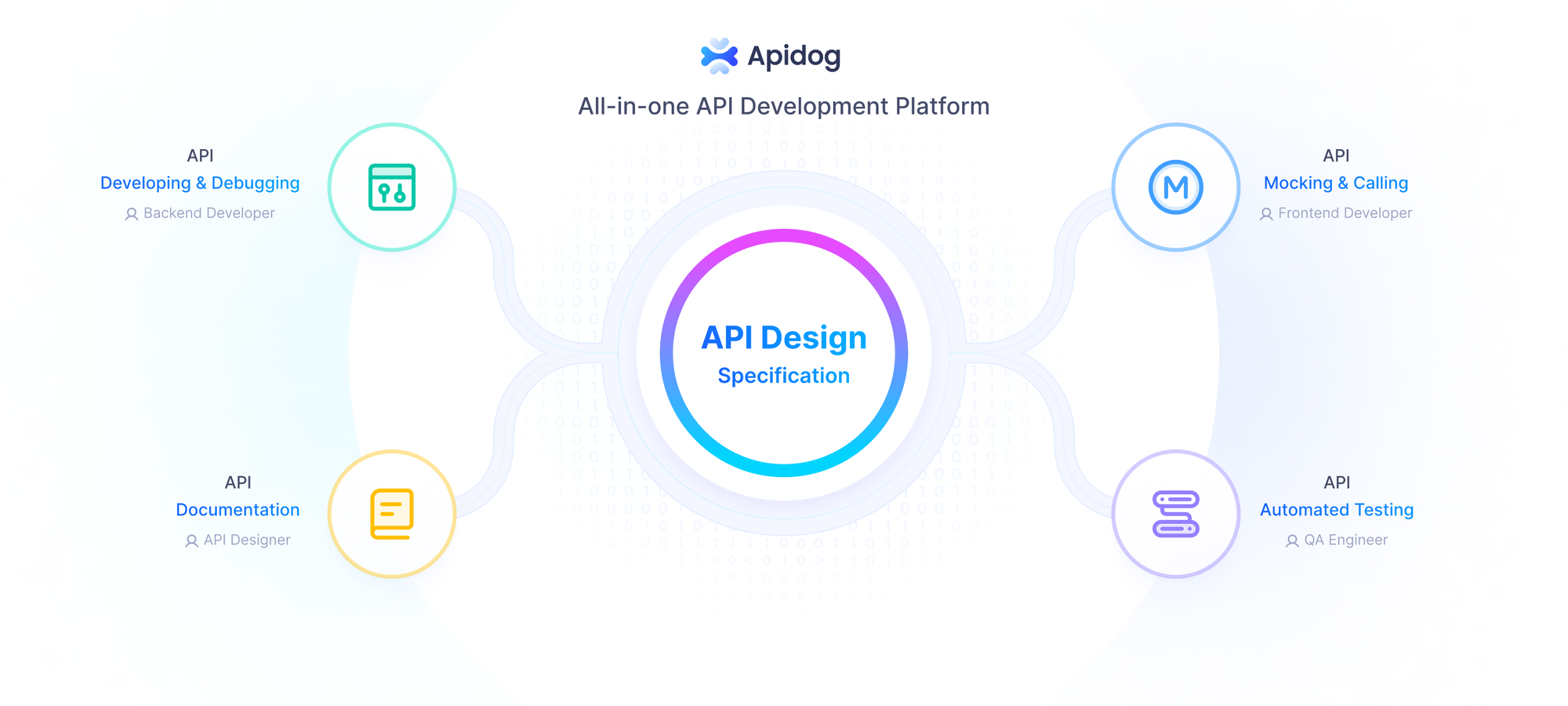
Code Documentation and Technical Writing
Technical documentation often becomes an afterthought in fast-paced development environments. Qwen3-Coder addresses this challenge by automatically generating comprehensive documentation for codebases. The model analyzes function signatures, class structures, and algorithmic logic to produce clear, informative documentation.
The model generates various documentation formats including inline comments, README files, API documentation, and technical specifications. This versatility ensures documentation meets different stakeholder requirements, from developer-focused inline comments to executive-level technical summaries.
Additionally, Qwen3-Coder maintains documentation consistency across large projects. It establishes standardized documentation patterns and applies them throughout the codebase, ensuring uniformity and professional presentation. This consistency improves code maintainability and team collaboration effectiveness.
Security Analysis and Vulnerability Detection
Security considerations permeate modern software development, and Qwen3-Coder incorporates advanced security analysis capabilities. The model identifies common vulnerability patterns such as SQL injection risks, cross-site scripting vulnerabilities, and buffer overflow potential. This proactive security analysis helps developers address issues before they reach production environments.
The model understands secure coding practices across different programming languages and frameworks. It suggests appropriate input validation techniques, encryption implementations, and authentication mechanisms based on specific use cases and security requirements. This guidance helps development teams implement robust security measures consistently.
Furthermore, Qwen3-Coder analyzes dependency relationships and identifies potential security risks in third-party libraries. It recommends alternative packages when security vulnerabilities exist and suggests appropriate mitigation strategies for unavoidable dependencies.
Performance Optimization and Code Efficiency
Efficient code execution becomes increasingly important as applications scale and user bases grow. Qwen3-Coder analyzes algorithmic complexity and suggests optimization strategies for performance-critical code sections. The model identifies bottlenecks and provides alternative implementations with improved time and space complexity.
The model understands performance characteristics of different data structures and algorithms. It recommends appropriate choices based on specific use cases, considering factors such as access patterns, modification frequency, and memory constraints. This guidance helps developers make informed architectural decisions.
Additionally, Qwen3-Coder optimizes database queries and suggests indexing strategies for improved application performance. The model analyzes query patterns and recommends schema modifications that enhance execution speed while maintaining data integrity.
Multi-Language Support and Cross-Platform Development
Qwen3 models support 119 languages and dialects, greatly expanding their usability for global applications. This extensive multilingual capability extends beyond natural languages to programming languages, enabling Qwen3-Coder to handle polyglot development environments effectively.
The model facilitates code translation between different programming languages while preserving functional equivalence. This capability proves valuable for technology migration projects and cross-platform application development. Developers can leverage existing logic while adapting to new technological stacks.
Cross-platform compatibility considerations are automatically addressed by Qwen3-Coder. The model understands platform-specific differences and generates appropriate code variations for different operating systems, browsers, and runtime environments. This awareness reduces compatibility issues and accelerates cross-platform development cycles.
Implementation Strategies and Best Practices
Successfully integrating Qwen3-Coder into existing development workflows requires strategic planning and gradual adoption. Teams should begin with low-risk applications such as test generation and documentation tasks before expanding to critical code generation scenarios.
Training and skill development become essential components of successful implementation. Developers need to understand how to effectively communicate requirements to AI models and critically evaluate generated solutions. This skill set represents a new competency area for software engineering professionals.
Quality assurance processes must evolve to accommodate AI-generated code. Traditional code review practices should expand to include AI output validation, ensuring generated solutions meet project standards and requirements. This enhanced review process maintains code quality while leveraging AI capabilities.
Conclusion
Qwen3-Coder represents a quantum leap in AI-powered software development tools. Its sophisticated architecture, exceptional performance benchmarks, and comprehensive feature set position it as a transformative force in the programming landscape. The model's ability to handle complex coding tasks while maintaining high accuracy standards makes it an invaluable asset for development teams.
The integration of Qwen3-Coder with existing development workflows promises to accelerate innovation cycles and improve software quality across the industry. As developers embrace these advanced AI capabilities, the focus will shift toward more strategic and creative aspects of software engineering.
